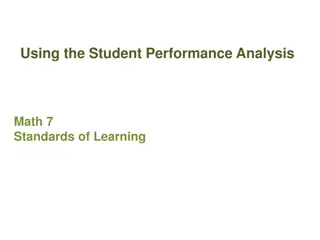
Understanding Fork, Exec, and Java Ping Pong Example
Explore the behavior of the fork and exec functions in a C program, predict the output sequence, and delve into the synchronized Ping Pong example in Java. Additionally, discuss the importance of using multiple threads in servers even with full support for event-driven programming.
Download Presentation

Please find below an Image/Link to download the presentation.
The content on the website is provided AS IS for your information and personal use only. It may not be sold, licensed, or shared on other websites without obtaining consent from the author. If you encounter any issues during the download, it is possible that the publisher has removed the file from their server.
You are allowed to download the files provided on this website for personal or commercial use, subject to the condition that they are used lawfully. All files are the property of their respective owners.
The content on the website is provided AS IS for your information and personal use only. It may not be sold, licensed, or shared on other websites without obtaining consent from the author.
E N D
Presentation Transcript
/30 CPS 310 first midterm exam, 10/6/2014 /30 Your name please: /40 /60 Part 1. More fun with fork and exec* /40 /200 What is the output generated by this program? Please assume that each executed print statement completes, e.g., assume that each print is followed by an fflush(stdout) . Be sure to consider whether the output is uniquely defined. You should presume that no errors occur. [30 points] 011 . main(int argc, char * argv[]) { printf( 0 ); fork(); printf( 1 ); execvp(argv[0], argv); printf( 2 ); } An unbounded sequence of 0s and 1s with twice as many 1s as 0s (in the limit). After the first 01 the exact order is undefined. Optional: explain. I will consider your explanation for partial credit if you need it. Parent prints 0. Fork creates child. Both parent and child print 1. Both parent and child exec the same program again (argv[0]). [5 points] Exec* does not return if there is no error, so 2 is never printed. [5 points] Note: for the remaining answers that have key words or phrases in bold sufficient for full credit. (I also used bold for identifiers, but those answers required more explanation.) bold, those words were generally
CPS 310 first midterm exam, 10/6/2014, page 2 of 5 Part 2. Ping Pong synchronized void PingPong() { while(true) { computeSomething(); notify(); wait(); } } These questions deal with the ping pong example discussed in class. PingPong is implemented in Java roughly like the code on the right: (a) Suppose that multiple threads call this PingPong method on the same object concurrently. Describe the resulting behavior. I am looking for 1-3 sentences summarizing any constraints on the execution ordering. [15 points] The threads execute computeSomething computeSomething serially (one after the other) in some undefined order, forever. Optional explanation Optional explanation: Since the method is synchronized at most one thread can execute in the method at a time. Each thread enters the method and holds the monitor until it calls wait releases the monitor, allowing another thread to execute in the method. Before calling wait wait, a thread calls notify notify to wake up one waiting thread, if there is one. Upon resuming in wait wait after a wakeup (resulting from a notify thread), a thread reacquires the monitor, returns from wait iteration of the loop before waiting again. synchronized, a monitor is held and so wait. Each wait wait blocks the caller and notify by some other wait, and executes another (b) Does it matter if we change the order of the statements in the loop? What if computeSomething() is between the notify and the wait, or after the wait? What if we change the order of the notify and wait? [15 points] It doesn t matter where the computeSomething call is: it might affect the order in which the threads compute, but the order is undefined anyway. [10] If the wait wait is before the notify notify, then all threads wait wait before any thread calls notify notify, and so all threads wait wait forever. [5] A surprisingly large number of answers seemed to suggest that calling notify somehow relaxes the mutual exclusion of the monitor. It doesn t! Only wait returning, and so the monitor/lock is always held during computeSomething(). notify at the wrong time implicitly yields the monitor, or wait releases the monitor, but it reacquires it before
CPS 310 first midterm exam, 10/6/2014, page 3 of 5 Part 3. Servers and threads and events Answer each of these short questions using a word, or a phrase, or a sentence, or maybe two. [10 points each] (a) It has been said that an event-driven design pattern is better than using multiple threads to structure a server. I have argued in class that it is best to use both models together. Why is it important for a server to have multiple threads, even in a system with full support for event-driven programming (e.g., with non-blocking system calls)? Multi Multi- -core threads, but each thread can use only a single core at a time. [See the blue slide on event-driven server to see how multiple requests can be in different stages of processing at the same time.] Modern machines have multiple cores and so they need multiple threads to use all of those cores. I gave a few points for concurrently , and I gave the benefit of the doubt to parallelism . core. Optional explanation: a fully event-driven server can execute multiple requests at the same time even without multiple (b) In a ThreadPool implementation, how does a sleeping worker thread "know" that it has been selected to handle the next request or event? What wakes it up? When an event/request/task arrives, it is placed on a queue and a worker thread is awakened, e.g., with a notify holds the mutex/lock/monitor on the queue and extracts an event/request/task from the queue, it knows it was selected to handle it. I gave full credit for any answer that suggested an event queue with a monitor event queue with a monitor (mutex and condition variable). notify. When a thread (c) The main thread of an Android application runs an event-driven pattern. If the app has a task to perform that is long-running or that must block, the main thread can start an AsyncTask to do the work. In this case, how does the AsyncTask report its progress back to the main thread? By posting a message/event posting a message/event on the main thread s event queue event queue. The AsyncTask is an object with a thread. The thread may report progress by calling an AsyncTask method, which posts a progress update event on a designated queue. The main thread handles events one at a time from its queue: it receives the progress update at some time in the future, whenever it is ready. (d) An atomic instruction performs an indivisible read-modify-write on memory: in particular a thread can use an atomic instruction to set a lock variable safely, indicating that the lock is busy. In this case, how does a thread know if it lost the race and the lock is already busy? What should the thread do if the lock is busy? The atomic instruction returns the old value returns the old value of the lock variable, e.g., in a register. Spin Spin or block block. Atomic instructions such as test-and-set or compare-and-swap return the value of the read before writing to the target location, e.g., by leaving the target s old value in a register. If the old value shows the lock was already held, the thread has lost the race. It should spin or block and retry until it succeeds in setting the lock when the lock is free.
CPS 310 first midterm exam, 10/6/2014, page 4 of 5 Part 4. dsh These questions pertain to your shell project code (dsh). If you don t remember the details of what your group did then make something up that sounds good. Please confine your answers to the space provided. [12 points each] (a) What would happen if you type the command dsh to your dsh, i.e., to run dsh under itself ? Will it work? What could go wrong? Sure Sure, that ll work. What could go wrong? The shell runs commands, which are just programs. The shell itself is just a program like any other. Many students seemed convinced that this could not work, and came up with some creative and fun ways that it might fail (but they were generally nonsense). My favorite answer was it works --- I did it by accident hundreds of times . (b) Briefly summarize how your dsh implemented input/output redirection (<>). What system calls did you call from the parent for this purpose? What system calls did you call from the child for this purpose? open open and dup purpose: the parent just forks the child, which sets up its own environment before exec dup* (e.g., dup2 dup2). In a proper shell these system calls are done in the child. The parent does no system calls for this exec*. (c) For pipeline jobs like cat | cat | cat, what would happen if a child writes into a pipe before the next downstream child (the process that is supposed to read from that pipe) has started? Can this scenario ever occur? Yes, it can occur because the order in which the children run is undefined. The bytes are stored in the pipe buffer until the reader is ready to retrieve them. If the writer fills the buffer, then it blocks until the reader starts reading. If no process holds the read side of the pipe, then the writes fail. But there is always such a process: the parent holds the pipe open until it has forked both children. (d) For pipeline jobs like cat | cat | cat, what would happen if a child reads from a pipe before the next upstream child (the process that is supposed to write to that pipe) has started? Can this scenario ever occur? Yes, it can occur because the order in which the children run is undefined. The reader blocks until the writer deposits some bytes in the pipe buffer. If no process holds the write side of the pipe, then the read returns an EOF. But there is always such a process: the parent forks the left child (the writer) before the reader, and in any case it holds the pipe open until it has forked both children. (e) For pipeline jobs like cat | cat | cat, how does a middle child s setup differ from the processes at the ends of the pipeline? How does a process know that it is the middle child? It has to dup the left-side pipe onto its stdin and the right-side pipe onto its stdout. The child does it before exec* cannot do it because the parent must preserve its own stdin and stdout (e.g., the tty). The child knows to do it because the child gets a snapshot of the parent s memory at the moment of the fork, including data structures that tell the child what to do (e.g., a list of process objects for the current job, and a pointer to a specific process in the list). exec*: the parent
CPS 310 first midterm exam, 10/6/2014, page 5 of 5 Part 5. Maps These questions pertain to a classic 32-bit virtual memory system, with linear page tables and 4KB pages. Answer each question with an ordered sequence of events. Feel free to draw on the back page: otherwise, I am looking for as much significant detail as you can fit in the space provided. [10 points each] (a) Suppose that a running thread issues a load instruction on the following 32-bit virtual address: 0x00002014. Suppose that the address misses in the TLB. How does the hardware locate the page table entry for the page? Please show your math. Break the VA into a Virtual Page Number (VPN) and a byte offset in the page. Index the page table with the VPN and examine the PTE. Conceptually this is just like indexing into any array. Extra smiles if you told me about the hierarchical page table structure or that the page table to index is the one whose base is loaded into the core s Page Table Base Register. Few did. This feels like it should be nasty math, but it is very easy. There are 4K bytes on each page, 4K = 4*1024 = 22 * 210 = 212. So the offset is the low-order 12 bits, or three hex digits (16=24, so 4 bits per hex digit) = 0x014. The high-order 20 bits (32-12=20) are the VPN, so VPN=0x00002=2. If you are weak on power-of-two math (we both know who you are!) take the time to bone up and see how easy it is. (b) Suppose further that the page table entry is empty : it does not contain a valid translation. The hardware cannot complete the requested virtual memory reference. What does it do? Fault Fault and let the kernel handle it (parts c and d). The machine raises a fault to redirect control to the OS kernel. Many answers suggested this was an error, as in segmentation fault . But it is just a miss in the page table, which is itself a cache. (c) How does the operating system determine if the reference is legal, i.e., how does it determine whether or not the reference results from an error in the program? Short full-credit answer: vm_map vm_map. The OS determines if the faulting address lies within some valid segment segment of the current virtual address space, and if it is allowed for that segment (read, write, execute permission permission). For example, it might run down a linked list of segments (vm_map). If the access is not valid for some attached segment, THEN it is an error: e.g., a segmentation fault or protection fault. (d) If the reference is legal, how does the operating system find the data for the page? Is it possible that the page already resides in memory? (Why or why not?) You may presume that the requested virtual page has never been modified. If the segment is backed by a file, then find the block location on disk by indexing the inode freshly allocated frame of machine memory. If the segment is anonymous (stack, heap) then zero table entry to map the virtual page to the frame, and return from the fault. inode block map, and read that block into a zero- -fill fill the frame. Install a page It is possible that the page already resides in memory. One example we discussed is a write (store instruction) to a copy page: the machine raises a fault because the page is write-protected. The OS copies it to a new frame, and maps the virtual page to the new frame, and enables writes. There are other cases. copy- -on on- -write write
Exam scores (ranked) 200? 180? 160? 140? 120? 100? 80? 60? 40? 20? 0? 0? 10? 20? 30? 40? 50? 60? 70? 80?
Ranked scores on individual questions (normalized). 120? 100? 80? Q1N? Q2N? 60? Q3N? Q4N? Q5N? 40? 20? 0? 0? 10? 20? 30? 40? 50? 60? 70? 80? Here we see that surprisingly few students really understand the basics of VM (question 5), and many did not take the time to study the material on threads that was presented in the last two weeks before the exam (questions 2 and 3). People did much better on the questions pertaining to the Unix system call interface (shell lab).






















